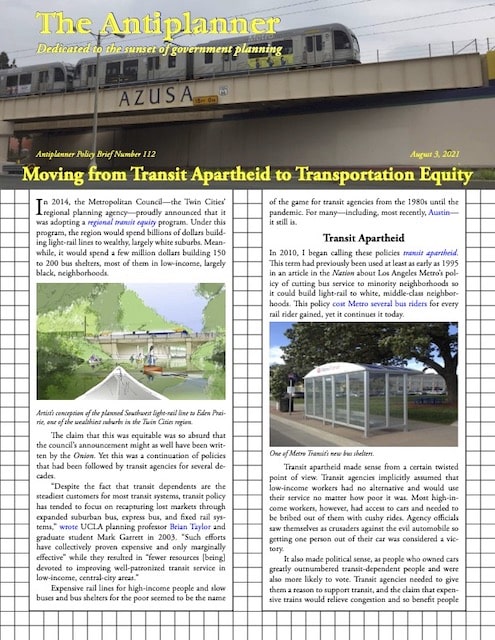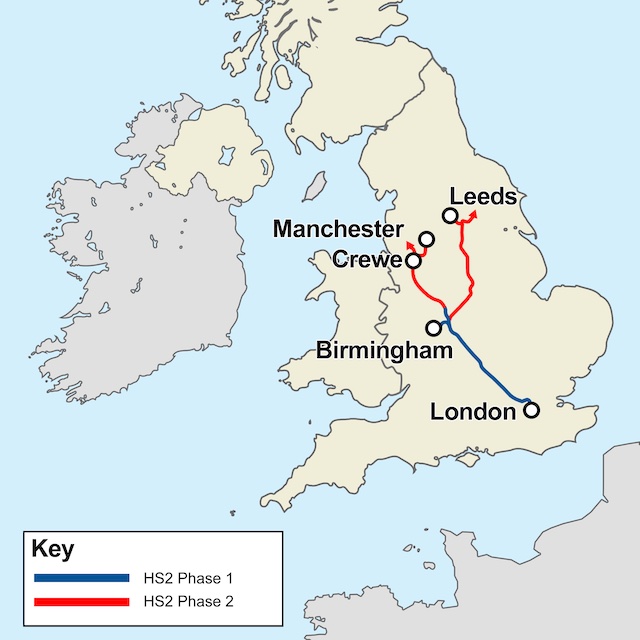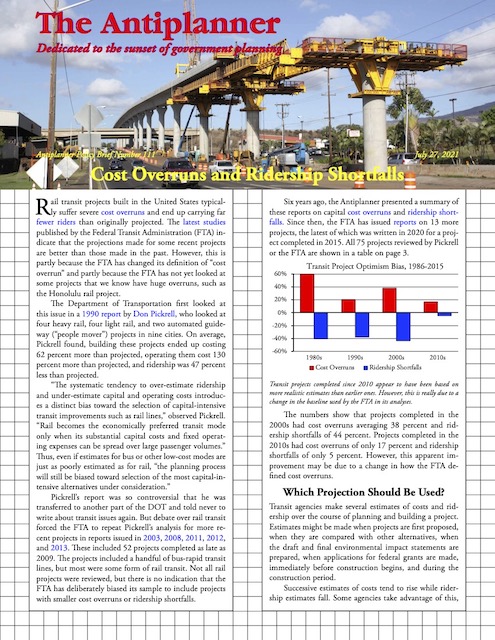Although Republicans successfully reduced the amount of money in the Senate infrastructure bill that is going to transit, it is still a large increase over the amount transit has been getting from the federal government. Transit agencies received about $14.4 billion from the federal government in 2019. Under the Senate infrastructure bill, this will increase to about $23.3 billion a year, or roughly a 62 percent gain.
Under the bill, transit is guaranteed $14 billion a year from the Highway Trust Fund alone. This is more than 20 percent of total spending out of the trust fund compared with 18 percent in the 2015 FAST Act. Since the trust fund isn’t collecting enough money out of fuel taxes and other federal highway user fees to even pay for the highway share, transit’s share of the fund will all be deficit spending.
Transit will also get $1.6 billion a year for “fixed guideway capital investments,” which doesn’t come from the Highway Trust Fund. Also known as New Starts, the vast majority of this money will be wasted on obsolete rail transit projects such as light rail and streetcars. The rest will be wasted on dedicated bus lanes for bus-rapid transit. Continue reading











